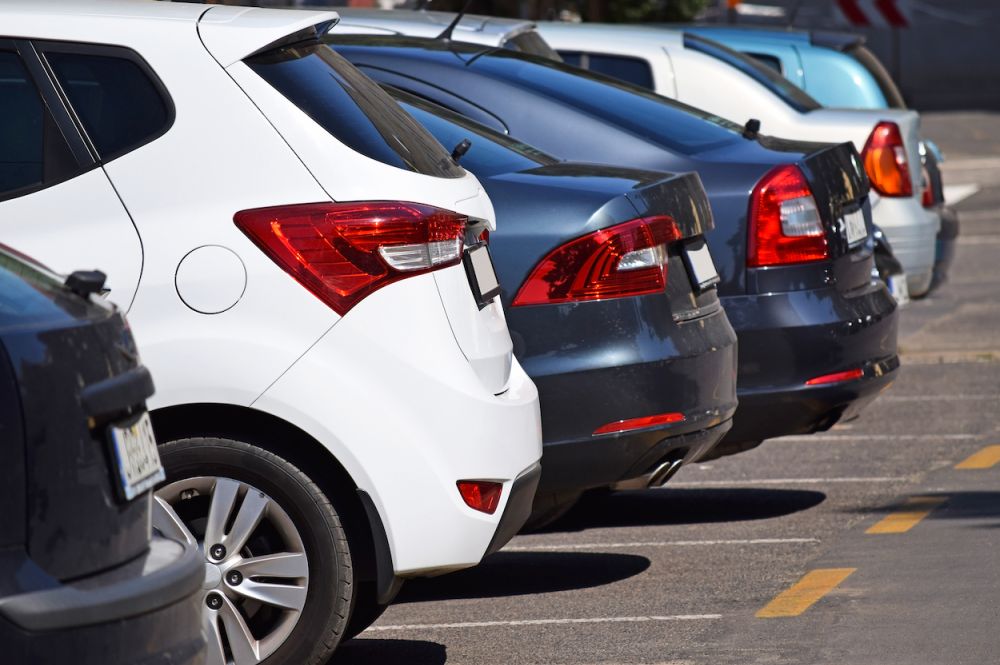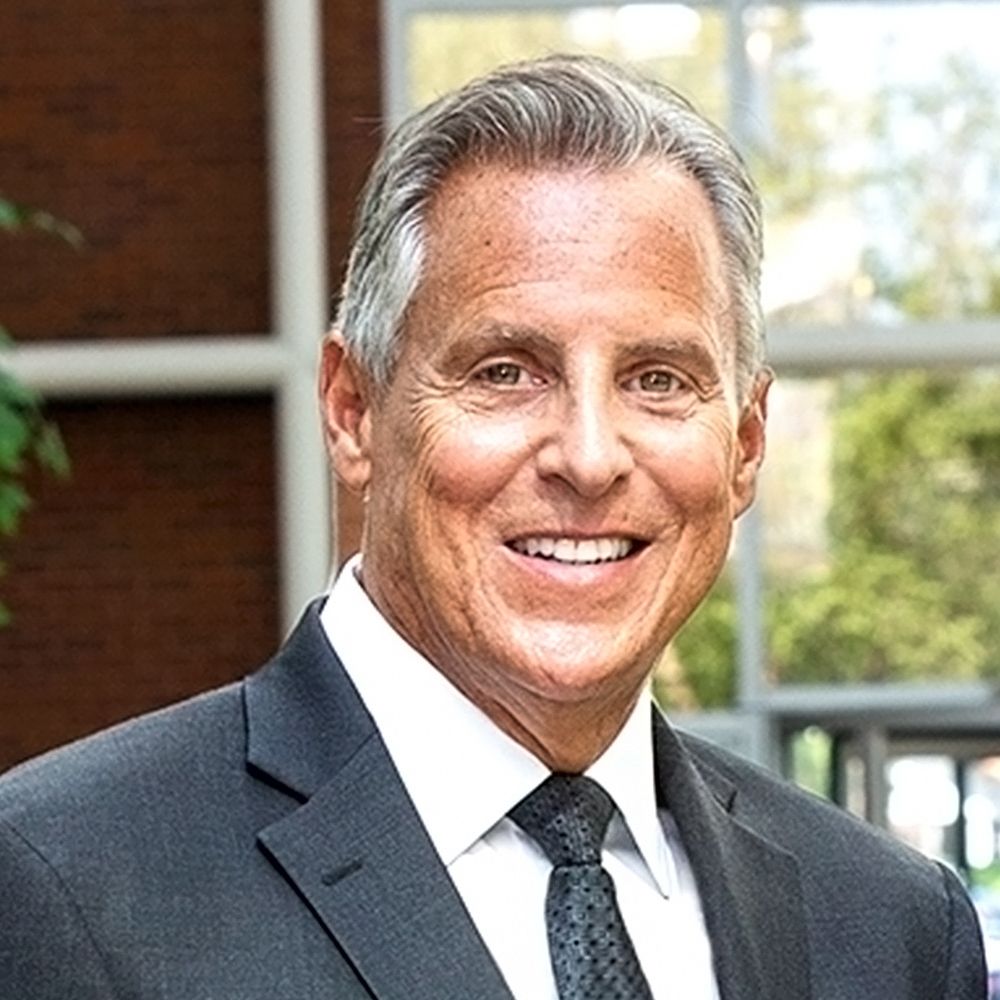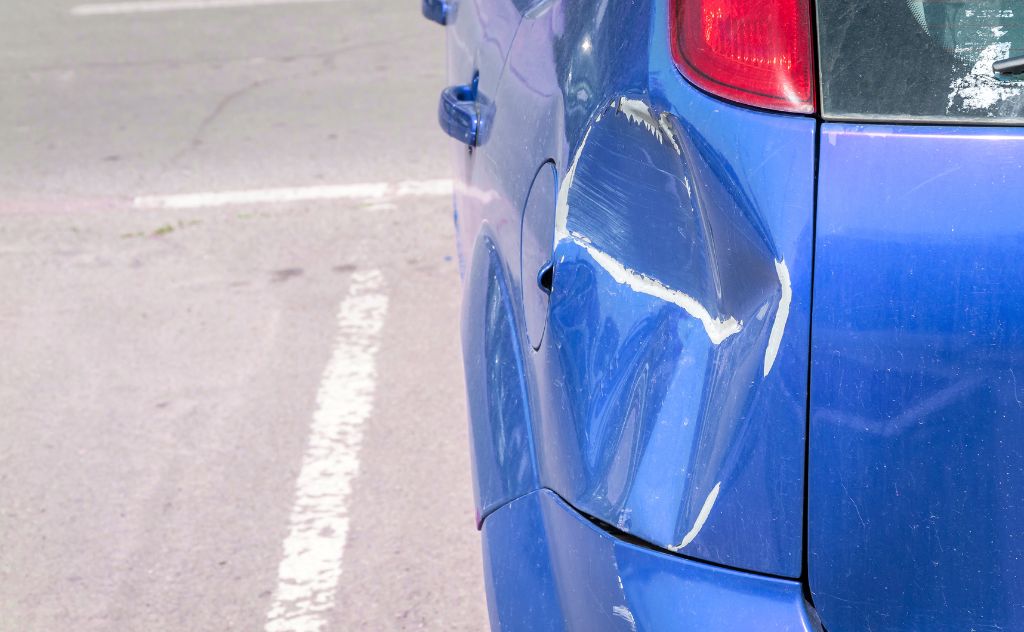- Home
- Practice Areas
- Car Accidents
- Truck Accidents
- Motorcycle Accidents
- Bus Accidents
- Drunk Driving Accidents
- No Fault & Uninsured Motorist
- Pedestrian & Bicycle Accidents
- Boating Accidents
- Dog Bites
- Swimming Pool Accidents
- Back & Spinal Cord Injuries
- Head & Brain Injuries
- Fractures, Sprains & Soft Tissue Injuries
- Passenger Injuries
- Wrongful Death
- View All
- Practice Areas
- Attorneys
- Attorneys
- About Us
- Testimonials
- Settlements
- About
- Blog
- Contact Us
What You Should Do After a Parking Lot Car Accident



- Home
- Blog
- Car Accident
- What You Should Do After a Parking Lot Car Accident
Parking lots offer many different distractions. Vehicles move in all directions, people move between cars, and shopping carts can appear almost anywhere. It can be hard to focus on your own driving. Busy parking lots often provide very little communication, and you could easily get confused about who has the right of way. While most parking lot accidents are just fender benders, they can also be more serious than you think. Continue reading to see when the fault might lie with you or another party. If you have suffered injuries or property damage in an auto accident in a parking area, you need knowledgeable legal advice and an advocate on your side. Contact the experienced Michigan car accident attorneys at Matz Injury Law for legal help with your car accident claim.
What Are the Different Areas of a Parking Lot?
A typical parking lot has three main areas. Car accidents can happen in any of them.
Through Lanes
Through lanes, also known as thoroughfare lanes, are the main lanes that connect a parking lot to the street. A through lane may also run around all or part of a parking lot’s perimeter. Motorists are often likely to drive faster in through lanes, especially when they are in the process of entering or exiting a lot.
Feeder Lanes
Feeder lanes, sometimes known as parking lanes, provide direct access to the parking spots. A lot might have multiple feeder lanes running between aisles of parking spaces. While a driver is likely to go slower in a feeder lane while they look for a place to park, they could speed up at any moment.
Parking Spots
The parking spot is where a moving vehicle comes to rest. Vehicle accidents often occur when a motorist backs out of a parking space. Collisions with parked vehicles are also common occurrences.
Who Has the Right of Way in a Michigan Parking Lot?
Different areas of a parking lot have their own right-of-way rules. The location of a parking lot accident can help determine who had the right of way and who was at fault.
Pedestrian Right of Way
Pedestrians almost always have the right of way in a parking lot. Vehicles must come to a stop for pedestrians in crosswalks. Generally, cars must yield to pedestrians almost anywhere in the lot.
People who are on foot have to be careful as well. They should take care, for example, not to dart out from between parked cars and into the path of a moving vehicle whose driver could not see them until it was too late to stop. In that situation, the motorist might not be liable for the pedestrian’s injuries.
Vehicle Right of Way
Vehicles in the three parking lot areas described above have the right of way in the order they were listed:
- Vehicles in through lanes have the right of way over vehicles in feeder lanes.
- Vehicles in feeder lanes have the right of way over vehicles in parking spots.
- Vehicles in parking spots must always yield the right of way.
What Are the Most Common Accidents in Parking Lots?
Several types of parking lot accidents are common in Michigan.
Wrong Way
Many parking lots intend for motorists to maintain traffic flows in specific directions but do not mark these directions clearly. A driver might not realize that a feeder lane is one-way, for example, causing them to drive in the opposite direction and risk a collision. They might try to make a left turn without using a turn signal or checking for oncoming traffic. Depending on the speed of the two vehicles, this kind of accident can be very serious.
Speed
The general rule in parking lots is that no one should drive faster than 15 miles per hour, even in thoroughfare lanes heading out to the street. This speed limit gives motorists time to slow down or stop to avoid a collision. Driving too fast in any part of a parking lot puts everyone in the immediate vicinity at risk of injury.
Rear-End Collisions
In busy parking lots, one car may follow closely behind another for various reasons. The driver might be eager to find a parking spot, for example. In a small lot, the driver might think they need to stay close to get out of the way of other drivers. If the lead driver sees an open spot and stops quickly, a rear-end collision could occur. Two parked cars can have a rear-end collision if both drivers back into each other.
Distracted Driving
Driving while distracted is as much of a problem in parking lots as on the open road, if not more so. Drivers could be distracted by a mobile device. Looking for a parking space can also cause accidents due to distraction. A driver looking for open spaces might not notice other vehicles or pedestrians.
Why Do Car Accidents in Parking Lots Occur Frequently?
Parking lot accidents happen for multiple reasons. Some are due to the confusing or chaotic nature of many parking lots. Others are due to the proximity between vehicles and pedestrians.
Distracted Driving
Distraction is a factor in at least two-thirds of parking lot car accidents, according to the National Safety Council (NSC). A driver might be focused on finding a parking space and not on cars, pedestrians, and other hazards that could be right in front of them. An NSC survey found that most drivers have used mobile devices for various purposes in parking lots, such as phone calls, texting, or even watching videos. The survey also found that most teenagers do personal grooming while driving in parking lots.
Speed
A rate of speed that would not be a big deal on the road could be disastrous in a parking lot. A 15-mph speed limit gives drivers enough time to respond to hazards in many situations. Any faster than that, though, increases the chances of a dangerous collision. A driver going 20 mph might not have enough time to stop for a pedestrian or a car backing out of a parking spot.
Visibility
It can be difficult for a driver to see their surroundings inside their parked car. They might have parked between two large trucks, making it impossible to see anything to either side as they back out of their spot. At night, poor lighting can make it difficult to see anything in a parking lot. These kinds of conditions create a serious risk of parking lot accidents.
Confusion
While the majority of drivers are probably familiar with the rules of the road on streets and highways, the rules in parking lots might not be as clear. The right of way can change quickly as you move through a parking area. Without traffic signs, it might not be clear who needs to stop or yield to other vehicles. A collision could be imminent whenever two drivers think they have the right of way over the other.
When is the Owner of the Parking Lot Considered Liable?
In many parking lot accident cases, a driver will be liable for others’ injuries because they acted with negligence in some way. The parking lot owner could be liable for injuries to drivers or pedestrians in some situations under a legal doctrine known as premises liability. Property owners have a legal duty to provide reasonably safe premises for customers and other visitors. They must either repair known hazards or warn people about dangerous conditions.
If a parking lot owner fails to repair or provide a warning about hazards in the lot, they could be liable for injuries that result. Examples of situations that could result in an owner’s liability include the following if they lead directly to an accident:
- Poor maintenance of the lot, resulting in potholes or other hazards
- Bad lighting
- Inadequate staffing or security
- Failure to indicate directions in lanes of traffic
- Failure to mark pedestrian crosswalks
What Should You Do After a Car Accident in a Parking Lot?
If you have been involved in a parking lot accident, whether as a driver, passenger, or pedestrian, you can take several steps to protect yourself and your legal rights.
Seek Medical Attention
A seemingly minor fender bender can cause serious injuries. Some injuries, such as whiplash, might not be apparent right away. Your priority should be your own safety and the safety of those around you. If you can, get yourself and others out of harm’s way and see if anyone — including you — needs immediate medical attention.
Call the Police
The 911 dispatcher will send police and, if necessary, paramedics to handle injuries. Even if no one is injured and the property damage is minor, a police report will be useful if you file a claim with an insurance company. The police will document what happened and assess who was at fault. This information can help you with a personal injury claim.
Exchange Information
The scene of the accident is a good place to exchange information with other drivers and witnesses. You will need insurance information from any other drivers involved in the accident. Getting contact information from witnesses can help you find them later if you need them for your claim.
Gather Evidence
If you are able, you can use this time to take pictures of the accident scene, any property damage to your vehicle, and your own injuries. The more evidence you can gather at the scene of the accident, the better, as long as you do not get in the way of the police investigation. You might ask witnesses on the scene if you could record a statement from them about what they saw. You can also write down or record your own account of what happened.
Report the Accident
You will need to report the accident to your insurance company. Even if you do not think the accident was bad enough to be worth an insurance claim, it is still a good idea to report it. Another driver involved in the accident might notice damage to their vehicle, or they might notice signs of whiplash or other injuries and make their own claim. If your insurance company was unaware of the accident, they might not be happy with you.
What Should You Consider While Driving Through a Parking Lot?
Stay safe while driving in parking lots! Here are a few tips on how to protect yourself and others:
- Stay focused on your surroundings. Avoid your smartphone, and watch what is right in front of you while looking for a parking spot.
Go slowly and use your turn signals. - Increase visibility by looking for parking spots that let you go forward to pull out.
- At night, try to park in well-lit areas.
Need Help After a Car Accident in a Parking Lot? Call Matz Injury Law.
If you have suffered injuries or property damage in a parking lot accident, you may have the right to compensation. You might not want to deal with insurance, though, especially if you are recovering from injuries. A personal injury lawyer can help you obtain damages for your injuries. Matz Injury Law can handle the details of your claim so you can focus on your recovery. An experienced attorney can help in the following ways:
- Making sure you understand your legal rights and options
- Collecting evidence to support your case
- Preparing your insurance claim
- Advocating for you with the insurance company and working to negotiate a settlement
- Preparing a lawsuit and arguing for your rights in court if necessary
Parking Lots Are Not As Safe As You Think
The Michigan car accident lawyers at Matz Injury Law have decades of experience helping people injured in parking lot accidents and other vehicle accidents. We can help you recover what you deserve for your injuries. Contact our firm today at 866-226-6833 or through our online contact form.

Written By Steven Matz
Steven J. Matz is a founding shareholder of Matz Injury Law. The firm’s concentration is on personal injury litigation, with an emphasis on traumatic brain injury.
Speak To an Attorney
"*" indicates required fields







The maximum contingency fee permitted by law is actually 331/3%. Michigan court rules require that the attorney fee be computed on the net sum recovered after deducting all disbursements properly chargeable to the enforcement of the claim.
We can charge 22% while virtually all other injury attorneys charge 331/3% because we are very, very, good at obtaining results for our clients.
We do not spend millions of dollars on television ads; instead, we offer a lower fee to all our clients. We do not have dozens of lower paid associates handling our work. All our clients are represented by Steven and Jared Matz. Steven Matz started the firm in 1977 and since then has dedicated his life to representing injury victims. Jared joined the firm in 2016 but grew up listening to stories, discussing theories, and generally learning at the dinner table about how to effectively and compassionately represent injury victims. Jared Matz was literally born to represent individuals involved in motor vehicle crashes.
All of our cases are handled on a contingency fee and all our cases are handled at 22%. Whether the case settles or goes through trial, the fee does not change. While our competitors make excuses as to why they charge so much, we are obtaining results for our clients at a lower fee.
At a typical television advertising law firm, your first call will be handled by a receptionist, who may refer you to an intake person, who will discuss your claim with an intake manager, who then discusses your claim with an associate, who may then report to a partner. You may never speak with the person whose name is at the top of the letterhead. At Matz Injury Law you will always speak with either Steven Matz or Jared Matz.

© 2024 Matz Injury Law

